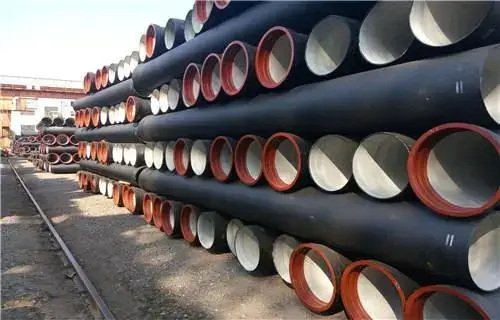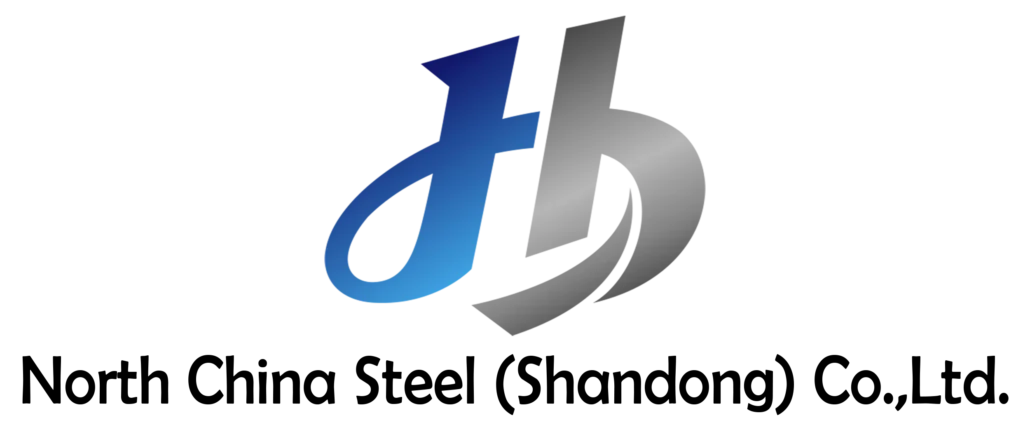introduction
Welcome to the North China Steel Blog, where we discover the vast potential of ductile iron pipe and delve into their benefits and applications. The term ductile pipes is used to describe pipes cast using centrifugal centrifugal cast after adding nodulizing agents to the molten metal above No. 18. These pipes are also known as cast iron pipes or ductile pipes. This material is ideal for pipelines that transport tap water.
What is ductile iron pipe?
Ductile iron pipe is a high-strength, high-toughness cast iron material whose strength and toughness far exceed that of ordinary gray cast iron. This is because, during the production process of ductile iron, a certain amount of nodularizing agent is added to make the graphite exist in a spherical form, significantly improving the cast iron’s mechanical properties.
The spheroidization process and the inoculation procedure are used to produce spherical Graphite. This improves cast iron’s mechanical properties, particularly its plasticity and toughness. It has successfully been used, based on its outstanding performance, to cast complex stress-bearing material with strength, toughness and wear resistance – parts with higher performance demands. When “replacing iron with steel”, the term is referring to ductile or wrought iron.
The main advantages of ductile iron pipes are as follows:
1. High strength and toughness. The strength and toughness of ductile iron are far superior to ordinary cast iron, giving it better stability and safety when withstanding high pressure and heavy loads.
2. Easy to install. Ductile iron pipes are connected with flexible joints, making installation easy and fast without complicated welding and anti-corrosion treatments.
3. Low maintenance costs. Ductile iron pipes have a service life of more than 50 years and low maintenance costs, significantly reducing the company’s operating costs.
4. Good environmental performance. During the production process of ductile iron pipes, no harmful substances are produced, and there is no environmental pollution.
Ductile iron pipe specifications
1. Diameter specification
The diameter specifications of ductile iron pipes are usually expressed in millimeters (mm). Common diameter specifications include DN80, DN100, DN150, DN200, etc. The larger the diameter, the stronger the pipe’s pressure-bearing capacity and flow transmission capacity.
2. Wall thickness specification
The wall thickness specifications of ductile iron pipes are usually expressed in millimeters (mm). Standard wall thickness specifications include K9, K10, K12, etc. Wall thickness refers to the thickness of the pipe, which directly affects the pipe’s pressure-bearing capacity and service life. Generally speaking, the greater the wall thickness, the higher the pressure-bearing capacity of the pipeline, which is suitable for high-pressure and large flow situations.
3. Length specification
The length specifications of ductile iron pipes are usually expressed in meters (m). Standard length specifications are 6m, 8m, 12m, etc. Length refers to the overall size of the pipeline according to project requirements.Cut and join. Generally speaking, the longer the specification, the fewer connection points during use, which is beneficial to the installation and maintenance of the pipeline.
4. Material specifications
The material of ductile iron pipe is ductile iron, a cast iron material obtained by adding rare earth magnesium alloy to cast iron and subjecting it to spheroidization treatment. Material specification requirements include chemical composition, mechanical properties, metallographic structure, and other indicators.
When selecting ductile iron pipe specifications, factors such as the pipe’s usage environment, flow rate, pressure, etc. We need to be considered to ensure the safe and reliable operation of the pipeline.
Ductile iron pipe fitting
There are many kinds of accessories for ductile iron pipes. Ductile iron pipe fitting mainly includes plug-in short pipes, socket-in-plate short pipes, double-in-disk short pipes, socket elbows, socket-in-disk tees, socket-in-place tees and full-in-place tees, etc. In addition, ductile iron pipe fittings commonly used coil-bearing short lines, coil-inserted short pipes, double-bearing ferrules, double-bearing elbows, socket elbows, socket-socket tees, full-bearing tees, socket-plate tees, and socket plugs. , plugging,

full-bearing 45-degree inclined tee, double-bearing tapered pipe, socket-shaped tapered pipe, plate-bearing elbow, plate-inserted elbow, double-bearing one-plate tee, etc. Flange accessories such as bolts and rubber pads are also essential in practical applications. Depending on the different connection requirements of the pipeline, T-type socket accessories. Such as rubber rings and K-type socket accessories such as rubber rings and bolts may also be needed.
How to select ductile iron pipe
1. Reliability of the manufacturer
When selecting ductile iron pipe fittings, you must consider their compatibility with ductile iron pipes. Their use environment, working pressure, and other factors to ensure their safe and reliable use. At the same time, since there are many brands of ductile iron pipe fittings on the market, it is recommended to choose a strong brand manufacturer to ensure the quality of the product.
2. Raw materials and costs
This includes raw material costs, production costs, transportation costs, etc. Among them, the cost of raw materials is the most significant, mainly including iron ore, coke, spheroidizing agent, etc. For example, fluctuations in iron ore prices will directly affect the price of ductile iron piping.Different production processes will lead to additional production efficiency and product quality, thus affecting the price of ductile iron piping.
3. Market requirement
When market demand is high, the cost of ductile pipes will rise; conversely, when market demand is low, the price of ductile pipes will fall. This is because when market demand is high, manufacturers can increase costs to obtain higher profits; when market demand is low, manufacturers may lower prices to attract consumers. For example, the government’s tax and environmental protection policies for the steel industry will affect the production cost of ductile pipes, thereby affecting their prices.

Finally, the international economic environment will also affect the price of ductile pipes. Generally, the price of ductile pipes is determined by various factors, including production costs, production processes, market demand, policy factors, and the international economic environment. Therefore, when consumers purchase ductile pipes, they must consider their price and quality, performance, applicability, and other factors. At the same time, manufacturers also need to rationally adjust production strategies according to market changes to maintain competitiveness.
Conclusion
In modern industrial production, piping systems are an indispensable part. They are responsible for transporting various liquids and gases, from domestic water to chemical production, from city gas to oil and natural gas, all of which are inseparable from the support of pipelines. Among many types of pipe materials, ductile iron pipes have become a high-quality choice in the industrial field due to their excellent performance and wide range of applications.
In short, ductile iron pipe, as an excellent transportation pipeline material, has broad application prospects. In future development, as technological progress and innovation continue to promote the advancement of casting technology. The manufacturing process, material selection, physical properties, and other aspects of ductile iron pipes will be further improved and improved.
